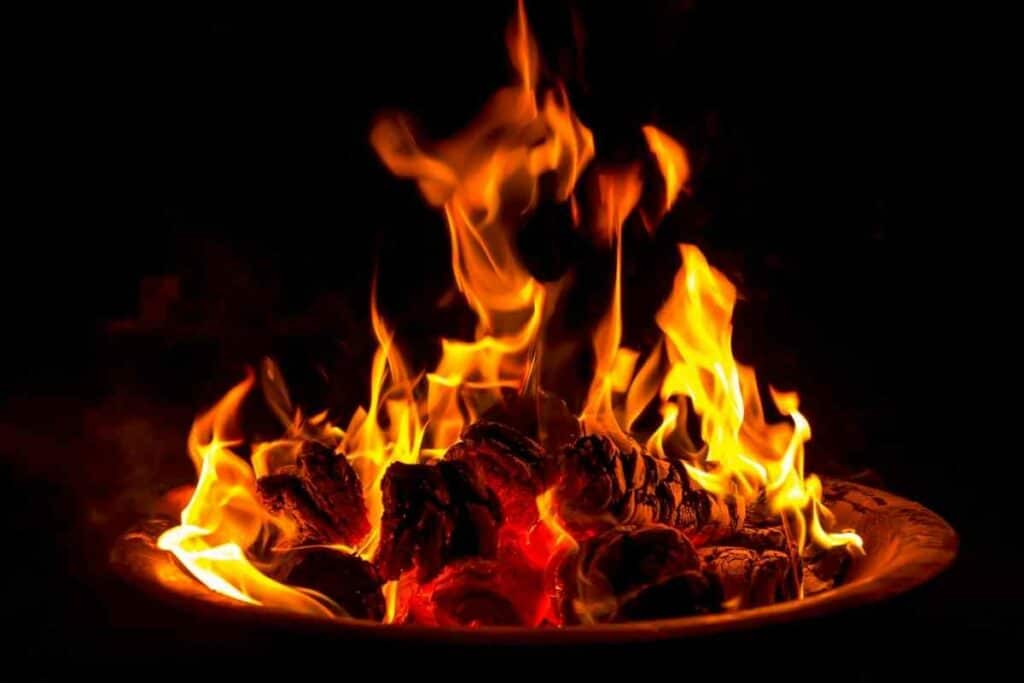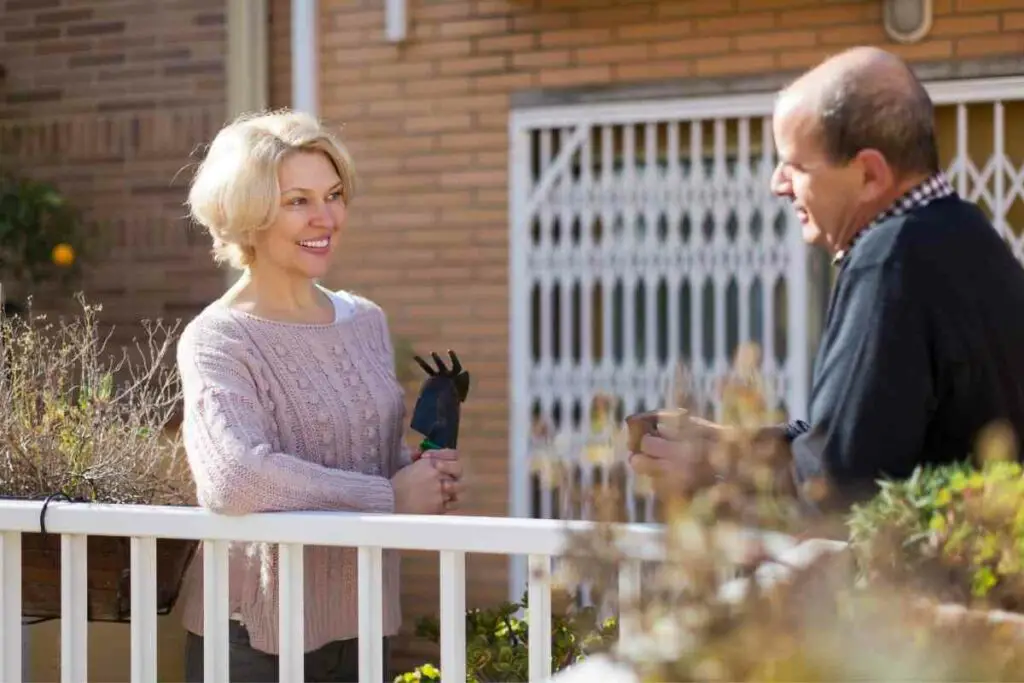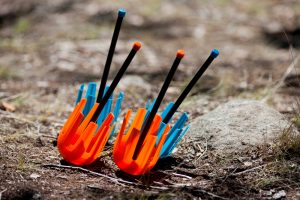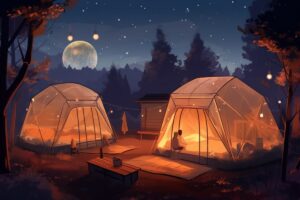If you have a lot of old wood or garden vegetation, you need to get rid of, a fire may be a convenient option.
Of course, you may also want to enjoy burning wood as part of a celebratory Fourth of July garden party or outdoor get-together around your fire pit in the winter months.
Depending on the size of your property and its location, you may be concerned that burning wood in your garden could affect neighbors or break the law.
In this concise guide, we outline the rules around burning wood in your yard, with advice and links for all 50 states.
Can I burn wood in my garden at any time of day? – a state-by-state guide
Use this table to find guidance on backyard burning in your state.
| State | Can I burn wood in my backyard? | More info |
|---|---|---|
| Alabama (AL) | Restricted – Alabama restricts summer burning between May and October. | – Alabama burn law – Backyard burning in AL |
| Alaska (AK) | Restricted – Many municipalities in the state require an open burn permit due to air quality regulations. | – Alaska burning applications (air quality) – Recreational burning in Anchorage |
| Arizona (AZ) | Restricted – Small recreational or cooking fires do not require a permit, but anything larger requires an air quality permit. | – Burn permits in Arizona – Open burning guidance for Phoenix AZ |
| Arkansas | Yes – You can burn wood and vegetation that grew on the land without restriction. | – Yard waste open burning |
| California (CA) | Restricted – Outdoor burn permits are required across California. | – Burning logs outdoors in CA – Outdoor burn permits CA |
| Colorado (CO) | Restricted – Smoke permits are required for open burns of woodpiles, vegetation, and yard waste. | – Smoke permits in Colorado |
| Connecticut (CT) | Yes – But the burning must not create a nuisance to neighbors or contravene municipal restrictions. | – Open burning guidance for Connecticut |
| Delaware (DE) | Yes – You can burn wood and vegetation whenever you want unless directed otherwise by a State Fire Marshal or the National Weather Service. | – Citizens’ guide to open-air residential burning in Delaware |
| Florida (FL) | Restricted – Burning must take place between 8.00 AM EST and one hour before sunset.The wood must be in a pile of eight feet in diameter or less or burned in a container. | – Open burning advice – FL |
| Georgia (GA) | Restricted – Several open burning activities have restrictions and require a permit due to air quality. | – Open burning rules Georgia |
| Hawaii (HI) | Illegal – Backyard burning has been illegal throughout Hawaii since 2012 with a $10,000 fine if caught. They exempted cooking fires. | – Open burning guidance for Hawaii |
| Idaho (ID) | Yes – Idaho permits residential burning of garden waste and wood unless a local ordinance is in place. | – Idaho burning guidance |
| Illinois (IL) | Illegal – Backyard burning is illegal for everything except landscape waste. | – Illinois open burning guidance |
| Indiana (IN) | Restricted – Indiana restricts residential open burning of clean wood in a burn barrel depending on property type and proximity to neighbors. | – Indiana residential open burning guidance |
| Iowa (IO) | Yes – Residential burning of logs and firewood. Burning of garden waste is prohibited. Some municipalities require permits. | – Iowa burning guidance |
| Kansas (KS) | Restricted – Kansas restricts residential open burning to household trash in a burn barrel for air quality reasons. | – Kansas open burning guidance |
| Kentucky (KY) | Yes – Some municipalities require permits. | – Open burning guidance KY |
| Louisiana (LA) | Illegal – Open burning in Louisiana is illegal. Exemptions exist for parishes with a population of 300,000 or less for garden waste on private property. At population of 90,000 or less branches and logs may be burnt. | – Louisiana open burning guidance |
| Maine (ME) | Restricted – Outdoor burn permits from the town forest fire warden or local forest ranger are required. | – Maine open burning permit guidance |
| Maryland (MD) | Yes – Maryland permits residential burning of garden waste and wood unless a local ordinance is in place. | – Maryland open burning guidance – Maryland open burn laws article |
| Massachusetts (MA) | Restricted – Outdoor burn permits from the local fire department are required. | – Massachusetts open burning guidance |
| Michigan (MI) | Yes – Michigan permits residential burning of garden waste and wood unless a local ordinance is in place. | – Michigan open burning guide |
| Minnesota (MN) | Yes – Minnesota permits residential burning of garden waste and wood. | – Minnesota landscape debris burning guidance |
| Mississippi (MS) | Restricted – Outdoor burn permits from the local fire department are required. Mississippi also enforces burn bans periodically. | – Open burning guidance. DeSoto MS – Open burning guidance. Brandon MS – Open burning guidance. Starkville MS |
| Missouri (MO) | Yes – As long as the fire includes vegetation and untreated wood. | – Missouri open burning guidance |
| Montana (MT) | Yes – But only firewood can be burned. The diameter of the fire should be less than 3 feet. Open burning of waste, including vegetation, is restricted. | – Montana advice on backyard fireplaces |
| Nebraska (NE) | Restricted – Outdoor burn permits from the local fire department are required. Mississippi also enforces burn bans periodically. Nebraska restricts smaller recreational fires to 3 feet in diameter using clean wood. | – Nebraska open burning permits |
| Nevada (NV) | Illegal – Open burning in Nevada is illegal. Exemptions exist, including small fires with vegetation or wood. | – Open burning guidance NV |
| New Hampshire (NH) | Restricted – Outdoor burn permits from the local fire department are required. | – Open burning guidance New Hampshire |
| New Jersey (NJ) | Restricted / Illegal – Open burning has been banned across many counties due to recurrent statewide fire threats. | – Wood burning in New Jersey |
| New Mexico (NM) | Yes – Only wood is allowed to be burned openly in Albuquerque | – City of Albuquerque – open outdoor burning |
| New York (NY) | Restricted / Illegal – Authorities have banned open burning across New York City. In New York State, you can openly burn wood in districts with a population of less than 20,000. | – New York City burning restrictions – New York State open burning regulations |
| North Carolina (NC) | Yes – Wood and vegetation is permitted to be burned on a private property | – North Carolina open burning guidance |
| North Dakota (ND) | Yes – Wood and vegetation is permitted to be burned on a private property | – North Dakota open burning guidance |
| Ohio (OH) | Restricted – Ohio bans statewide outdoor burning between 6am and 6pm during March, April, May, October, November. Further restrictions may be in place if air quality alerts, or emergencies are taking place. Exemptions require prior notification of Ohia Environmental Protection Agency | – Ohio open burning regulations |
| Oklahoma (OK) | Yes – Oklahoma permit wood and vegetation to be burned on a private property. Some areas of Oklahoma require notification of the Forestry Division prior to the burn. | – Oklahoma outdoor burning guidance |
| Oregon (OR) | Restricted – Open burning restrictions vary by county in Oregon | – Oregon open burning restrictions and exemptions |
| Pennsylvania (PA) | Restricted – Many municipalities in the state require an open burn permit due to air quality regulations. | – Pennsylvania open burning restrictions (Hampton) |
| Rhode Island (RI) | Yes – Open burning must be supervised, at least 30 feet away from roadways, and take place between the hours of 8am and 5pm. | – Rhode Island burning ordinances |
| South Carolina (SC) | Restricted – Open burning restrictions vary by county in South Carolina | – South Carolina open burning guidance |
| South Dakota (SD) | Yes – The fire must be contained and have adequate clearance from buildings and trees. Maximum diameter of stacked wood is 3 feet. | – South Dakota open burning guidance |
| Tennessee (TN) | Yes – Check local ordinances. | – Burning guidance for the State of Tennessee |
| Texas (TX) | Yes – Check local ordinances. | – Outdoor burning in Texas guidance |
| Utah (UT) | Restricted – Utah enforces mandatory no-burn days across the state. This is an air quality directive and is usually in place between November and March. | – Utah no-burn days guidance |
| Vermont (VT) | Yes | – Vermont burning guidance |
| Virginia (VA) | Restricted / Illegal – A burn ban is usually in place between February and the end of April. During this time, you cannot start a fire between midnight and 4 pm. | – The 4pm burning law |
| Washington (WA) | Yes – The fire must be contained and have adequate clearance from buildings and trees. The maximum diameter of stacked wood is 3 feet. | – Washington open burning guidance |
| West Virginia (WV) | Restricted / Illegal – A burn ban is usually in place from March to May and October to December. You cannot start a fire between 7 am and 5 pm during this time. | – West Virginia open burning guidance |
| Wisconsin (WI) | Restricted – A permit is required to burn lawfully. | – Wisconsin open burning guidance (including questionnaire) |
| Wyoming (WY) | Yes – Burning must occur within daylight hours and finish 2 hours before sunset. Check the wind direction so that smoke is not blown towards buildings. | – Wyoming burning guidance |
Key takeaways for burning wood in your backyard
If you are able to freely burn wood on your property, here are few last-minute considerations for ensuring your burning is a nuisance-free event:
Most recreational or cooking fires fly under the radar
Most states accommodate fires for camping, cooking or ceremonial events. They need to be small, ideally with a diameter of less than three feet.

Burn between dawn and dusk
You can’t burn wood in your garden any time of the day. Stick to burning between dawn and dusk, which falls within the time period specified by the Environmental Protection Agencies of most states.
Supervise the fire
Never leave a fire unattended. Stay with the fire until it is fully extinguished.
Have means of extinguishing the fire and a phone on-hand
Have a low threshold for fully extinguishing a fire before it gets out of hand. Most states will expect you to have a means of extinguishing the fire and a phone to call the fire department if there is an emergency.
If in doubt, ask your local fire department
If you are unsure about your local regulations, your local fire department should be able to help you. It’s also worth letting them know you are going to burn wood, if the fire is large.
Touch base with your neighbors

No-one wants to be downwind of a bonfire, so letting your neighbors know that you are intending to burn wood is good courtesy.
Rounding up
It’s clear that having a backyard bonfire isn’t as straightforward as you’d think.
If you are going to enjoy the firepit or burn off your garden waste, make sure you are on the right side of the law…and your neighbors!






